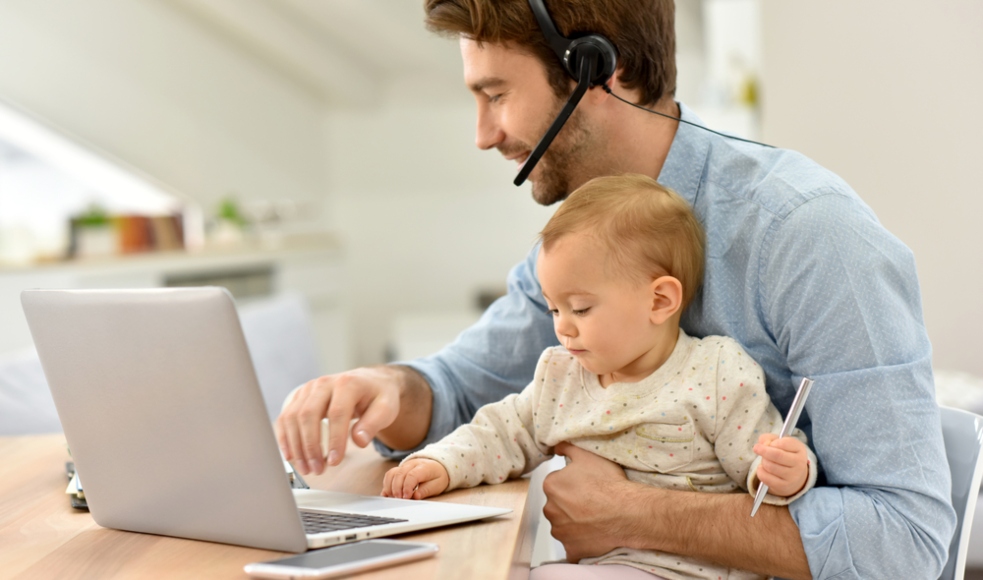What will work in a post-COVID world look like?

BY Michelle Donovan
May 12, 2020
As provinces across the country carefully begin to reopen businesses shuttered by the COVID-19 pandemic, questions have emerged about what the workplace might look like and how employees and employers might function in the new world of social distancing.
We asked Brent McKnight, an associate professor of strategic management at the DeGroote School of Business about the challenges and the change we might see.
What are the biggest challenges facing employers as they prepare to get their employees back to work?
Employers are facing quite a few challenges and many of them are unique to their particular situation. Chief among them is likely the still-significant uncertainty as to when their particular business will be able to re-open and what specific rules might be in place for their type of business.
But in general businesses are creating plans that will enable them to create physical distancing for employees and customers, provide for the safety of their employees and customers through PPE, enhanced cleaning and safety installations such as plexiglass.
For a lot of employers, they will have to, or should, consider the employee’s home situation.
Helping their employees with accommodating work scheduling or daycare solutions will be challenging but essential.
What kinds of considerations would we expect to see in densely populated buildings with elevators, close work stations, etc?
I expect these challenges will be overcome with a combination density reduction and rule/norm setting.
To reduce density, firms will probably employ a combination of working from home and, where possible, shift work. Shift work is likely reasonable in some manufacturing and construction settings where physical presence is required.
In addition, firms are going to need to set rules and norms about how to move around and interact within a workplace. This will likely include unidirectional hallways, procedures for use of and cleaning of shared spaces like meeting rooms, and markers to indicate physical distancing.
As well, employers should require dramatic decluttering of desks and personal effects to make it easier to clean.
What kinds of changes do you think may end up being permanent?
This disaster is very unlike most disasters that I would study, or that most resilience scholars look at. Often a disaster comes in fast – think a flood or a fire or hurricane – and then it recedes and the focus is on getting back to business and our daily lives.
In this case, the crisis is long lasting. The duration of 12 to 18 months has been thrown around only because it is the best guess of when a vaccination could be available. But there are no guarantees on this timing or even if a vaccine is a feasible solution to effectively prevent COVID-19 infection.
There is lots of uncertainty over the duration of this challenge.
It is this sustained pressure over months that I think will galvanize some “new” normal. This is a lot of time to shift consumer and citizen behaviour and to adopt new business practices.
Companies most impacted by this disaster cannot sustain 12 to 18 months of such disruption. New business models and ways of doing things will have to be created by those that hope to survive.
A new social contract might be required between governments and its people. For instance, Spain is accelerating their already existing plans to offer a basic minimum income. But governments are spending hard.
The expression that necessity is the mother of invention certainly seems to have some truth here. Looking at healthcare for example, the adoption of telemedicine, a practice that has had very limited uptake in the past, is taking off. How amazing – no need to drive to your doctor’s office for many questions about your health.
I think in many sectors, a big change will be an increased focus on service.
I have been thinking for a long time that the future of local business has to trend towards value-added services. For instance, how can local retailers provide services to customers to add value rather than simply being a place to buy products that can be bought through other online means? What new services can entrepreneurs develop that can make people’s lives easier?
How has this pandemic changed our work-life balance?
Work-life balance is always a challenge, pandemic or not. However, the fact that many working parents are thrust into the role of teacher and employee at the same time is putting a great deal of stress on work-life balance. We are often less productive during our working hours putting pressure on other times of the day.
Despite this, I think employees need to find ways to create that work and life demarcation by perhaps setting and keeping working hours and ensuring that work takes place in a specific place, out of sight when the work day is over.


